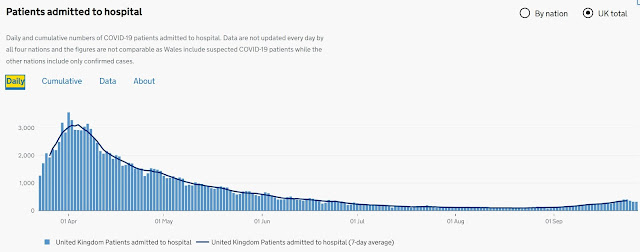*For those either too young to remember - or not brought up in the UK - this is from a classic Monty Python Sketch
The
COVID-19 crisis has revealed the increasingly major role played by
behavioural scientists in advising Governments - and major organizations
- to ensure that the public adheres to their desired strategies. For
COVID-19 this includes strategies such as social distancing and mask
wearing. In the last 15 years the most pervasive technique promoted by
behavioural scientists is the nudge technique described in the 2008 book
by Thaler and Sunstein, and which was enthusiastically adopted by national
leaders such as US President Obama and UK Prime Minister Cameron. Nudge
is actually a collection of approaches sharing certain characteristics -
most notably changing behaviour without much leverage - that are
designed to alter choices to achieve behaviour change.
The
success of a nudge is gauged by the predicted outcome and there have
been many reports and research articles describing nudges deemed to have
been successful. However, behavioural interventions often fail to
achieve their desired aims because of "backfiring effects". For
example, many educational campaigns aim to change dietary choices by
highlighting negative consequences of eating unhealthy food; but, in
practice, this does not always pan out as planned because people who are
dieting may be more - not less - likely to feel the need to eat a
particular unhealthy food after receiving a message highlighting its
negative aspects.
In contrast to the many published success stories, there has been very little research in examining interventions that inadvertently fail. A paper published today (by researchers from Queen Mary University of London, Kings College, University of Erfurt Germany, and Max Planck Institute Germany) in Trends in Cognitive Science finally addresses this problem. Lead author Magda Osman says:
Our paper provides a comprehensive analysis of behavioural iterventions that have failed and we identify the underlying causal pathways that characterise different types of failure. We show how a taxonomy of causal interactions that result in failures exposes new insights that can advance theory and practice.
Full paper: Osman, M., McLachlan, S., Fenton, N. E., Neil, M., Löfstedt, R., & Meder, B. (2020). "Learning from behavioural changes that fail". Trends in Cognitive Science, https://doi.org/10.1016/j.tics.2020.09.009 The full paper is available for free for 50 days. Accepted version (full pdf) is available here.
UPDATE: The New Scientist has a feature on the article with an interview with Magda Osman
UPDATE: The Human Risk Podcast interview with Magda Osman about the article










